Re-imagining America
14.08.–29.08.2020
“GRENZZIEHUNG”
Hans Hs Winkler
Eröffnung/Opening:
13.08.2020, 19:00
Do./Thu.–Sa./Sat.: 15:00–18:00
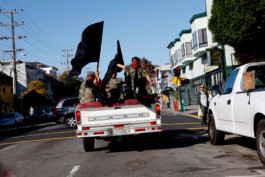
In der Projektreihe Re-imagining America werden exemplarisch vier in den USA realisierte Projekte/Interventionen vorgestellt, die sich mit der Geschichte der Vereinigten Staaten und ihren Grenzen auseinandersetzen.
In the exhibition Re-imagining America four projects that were realized in the USA will be presented, each of which grappling with the history of the United States.
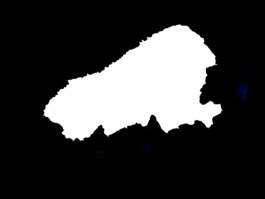
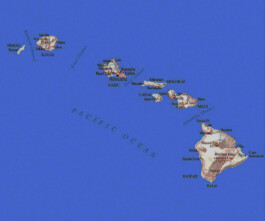
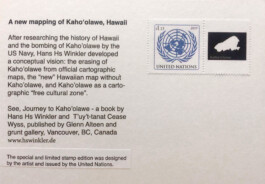
Die Reise nach Kaho’olawe
2018
2018 wurden Karten von Hawaii publiziert, aber ohne die Insel Kaho’olawe. Die Reise nach Kaho’olawe setzte diesem Verschwinden eine eigene Landkarte, Postkarte und Briefmarke entgegen, welche „die Leerstelle“ markieren. (Die Briefmarken sind in Kooperation mit den Vereinten Nationen in New York publiziert und in Umlauf gebracht worden.)
Seit Hunderten von Jahren ist Kaho’olawe ein kulturelles Zentrum der Hawaiianer/Polynesier. 1942, während des Zweiten Weltkriegs, wurde die Insel von der Navy der US-amerikanischen Armee besetzt und bis in die 1980er-Jahre als Ziel für Bombentests und als Trainingsgelände genutzt. Schon Ende der 1960er-Jahren war Kaho‘olawe der „meist bombardierte Ort der Erde“. Dort erprobte man Techniken und Strategien des Luftkrieges, ebenso neues Bombenmaterial für unterschiedliche Kriege, unter anderem schon für Berlin im Zweiten Weltkrieg. Derzeit unbewohnt ist die Insel vorrangig nur für die polynesische Bevölkerung im Rahmen von kulturellen und geistigen Aktivitäten sowie für Aufbau- und Pflanzarbeiten zugänglich.
(Hintergrund: Hawaii wurde 1893 von den USA annektiert und die lokale Monarchie unter massiven Protesten der hawaiianischen Bevölkerung abgesetzt. 1959 wurde die Inselgruppe zum 50. US-Bundesstaat erklärt.)
Die Reise nach Kaho’olawe
(The Trip to Kaho’olawe)
2018
In 2018 maps of Hawaii were published, but the island of Kaho’olawe were missing. Die Reise nach Kaho’olawe marks this disappearance with its own map, postcard, and postage stamp where the “empty space” is clearly marked. (The stamps were published and brought into circulation in collaboration with the United Nations in New York City.)
Kaho’olawe has been a cultural center for Hawaiians and Polynesians for hundreds of years. During the Second World War, in 1942, the island was occupied by the Armed Forces of the United States and was used well into the 1980’s by the U.S. Navy as a training ground and target for blast tests. By the end of the 1960’s Kaho‘olawe was often called “the most bombed out place on Earth”. There new techniques and strategies for air campaigns were tried out, as well as new bomb materials for various wars – even including for Berlin in World War II. The island is currently uninhabited and is only accessible by Native Hawaiian peoples for cultural and spiritual activities, as well as for reconstruction and the reestablishment of vegetation.
(Background: Hawaii was annexed by the United States in 1893 and the monarchy there was deposed despite massive protests by the Hawaiian populace. In 1959 the island group was declared as the 50th U.S. State.)

Buy a Revolution
2010
Für die Intervention mietete Hans Hs Winkler einen Pick-up-Truck mit Fahrer und heuerte zehn mexikanische Tagelöhner an, die mit Armeekleidung, schwarzen Fahnen und Macheten ausgestattet wurden. Mit kriegerischer Geste fuhren sie durch die Stadt, in Richtung Rathaus (City Hall). Die Aktion dauerte eine Stunde und fand im Mission-District statt.
Die Idee zur Aktion Buy a Revolution – „Selbst eine Revolution kann man kaufen“ − entstand während einer Wanderung entlang der mexikanisch-kalifornischen Grenzmauer bei Tijuana.
(Hintergrund: Kalifornien wurde 1848 von den USA annektiert und 1850 zum 31. Staat der Vereinigten Staaten erklärt.)
Buy a Revolution
2010
For this intervention Hans Hs Winkler hired a driver with a pick-up truck and ten Mexican day laborers, and then equipped them with battle fatigues, black flags, and machetes. They drove through the city with militaristic gestures in the direction of city hall. The entire action lasted for one hour and took place in the Mission District.
The idea behind Buy a Revolution – “You Can Even Buy a Revolution” emerged during a hike along the -Mexico-California border wall near Tijuana.
(Background: California was -annexed by the United States in 1848 and was declared the 31st U.S. State in 1850.)
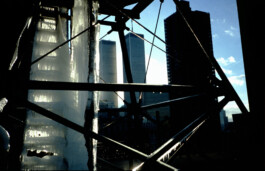
New Yorker Eisleiter
2001
Die Wassertürme über den Dächern Manhattans sind Symbole der Stadt.
Im Januar 2001 veränderte sich das Erscheinungsbild eines Wasserturms für einen Tag, womit nicht zuletzt Bezug auf die wechselhafte Geschichte Manhattans genommen wurde.
(Hintergrund: 1626 kauften holländische Kaufleute von dem indigenen Stamm der Delawaren, die Insel „Manna-hatta“ für 60 Gulden ab und gründeten hier New Amsterdam. 1664 ergab sich die Stadt dann kampflos den Angriffen der britischen Royal Navy und wurde infolge des Machtwechsels in New York umbenannt. Nach dem Amerikanischen Unabhängigkeitskrieg war New York von 1788 bis 1790 die Hauptstadt der Vereinigten Staaten. Am 11. September 2001 wurden Teile Manhattans und das World Trade Center bei einem Terroranschlag zerstört.)
New Yorker Eisleiter
(New York Ice Ladder)
2001
The water towers on the roofs of Manhattan are a symbol of the city. In January 2001 the appearance of a water tower changed for one day, connecting it to the changing history of Manhattan.
(Background: In 1626 Dutch merchants bought the Island of “Manna-hatta” from an indigenous tribe of Delaware people for 60 guilders and founded New Amsterdam. In 1664 the city was given over to the encroaching British Royal Navy without a fight and after the change of government was renamed as New York. After the American War of Independence New York was the capital of the United States from 1788 to 1790. On the 11th of September 2001 part of Manhattan and the World Trade Center was destroyed by a terrorist attack.)
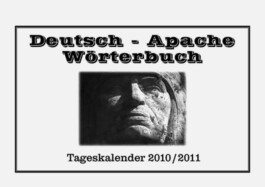
Apache-Deutsch-Wörterbuch
für drei Gefängnisse
2010
Durch das Apache-Deutsch-Wörterbuch erfolgt ein sehr spezifischer Blick von Deutschland aus auf die USA und auf das indigene Volk der Apachen.
In Chemnitz, Zwickau und Waldheim verbüßte der Schriftsteller Karl May (1879−1945), unter anderem wegen Hochstapelei, mehrere Haftstrafen. Die Zeit hinter Gittern verbrachte er vor allem mit dem Studium von Entdeckungs- und Forschungsliteratur; er begab sich gleichsam auf eine eigene fiktive Reisen zu den Mescalero-Apachen (New Mexico). Seine daraus entstandenen Romane, etwa um den Apachen-Häuptling Winnetou, beeinflussten mehrere Generationen in Deutschland nachhaltig und ebneten vielen seiner Leser*innen den Zugang zur „First Nation“-Bevölkerung der USA. Bis heute erfreuen sich etwa Indianercamps und die Karl-May-Festspiele großer Beliebtheit. Interessanterweise stehen diese Bücher heute auch in den Regalen der Apachen. In ihrer Sprache wird das Wort „Kultur“ mit „wo Leute Orientierung finden“ umschrieben.
Das Projekt wurde vom 7. August vom 11. September 2010 im Rahmen der Ausstellung Stadt ausrichten in Chemnitz realisiert.
Apache-Deutsch-Wörterbuch
für drei Gefängnisse
(Apache-German Dictionary
for Three Prisons)
2010
A very specific view from Germany on the United States and the indigenous Apache people is created through the Apache-German Dictionary.
The writer Karl May (1879−1945) served multiple prison sentences for fraud, among other crimes, in Chemnitz, Zwickau, and Waldheim. He spent most of his time behind bars studying exploration and research literature; and went in a way on his own fictional trip to the Mescalero Apaches in New Mexico. The resulting novels about the Apache Chief Winnetou sustained a strong influence over multiple generations in Germany, and introduced their readers to the Native American tribes of the continental United States. To this day some people still enjoy “Indianercamps” and the Karl May Theater Festival is immensely popular. Interestingly, these books stand in the shelves of the Apache. In their language the word culture is translated as, “where people find focus”.
The project was realized in Chemnitz as part of the exhibition Stadt ausrichten from the 7th of August to the 11th of September 2010.
CV
Hans Hs Winkler lebt und arbeitet seit 1995 sowohl in Berlin als auch in New York. Sein Hauptinteresse gilt dem öffentlichen Raum und dessen Symbolen. Von 1988 bis 2000 realisierte er unter dem Namen p.t.t.red (paint the town red) zusammen mit Stefan Micheel unter anderem die Stadtraum-Installationen goldener Schnitt durch Berlin, 1988–1990, und 1996 die Statue of Liberty in Red in New York. Hans Hs Winkler co-kuratierte Ausstellungen wie legal/illegal (2004) in der ngbk Berlin und „looking for mushrooms“ − Counterculture in San Francisco der 1950er bis 1960er-Jahre im Museum Ludwig, Köln (2008). Zwischen 2005 und 2008 publizierte er unter dem Titel walking newspaper Zeitungsprojekte in Istanbul, Johannesburg, New York, Havanna, Bonn und San Francisco.
http://www.hswinkler.de
CV
Hans Hs Winkler has lived and worked in both Berlin and New York City since 1995. His main artistic interests are public spaces and their symbols. From 1988 to 2000 he made urban space installations with Stefan Micheel under the name p.t.t.red (Paint the Town Red) including among others goldener Schnitt durch Berlin (1988–1990) and Statue of Liberty in Red in New York (1996). Hans Hs Winkler co-curated the exhibition legal/illegal (2004) at the NGBK in Berlin and Looking for Mushrooms − Counterculture in San Francisco from the 1950’s to the 1960’s at the Ludwig Museum in Cologne (2008). Between 2005 and 2008 he published the Walking Newspaper in Istanbul, Johannesburg, New York, Havana, Bonn, and San Francisco.